How I ordered and collected PRUSA i3
 After the printed case came to me for my watch (thanks again bigbee ), I got an idea to buy a 3D printer. The idea of RepRap opensource printers I liked, and the price for them is not so bite. After numerous pages of forums and heaps of offers on Internet sites, I decided to buy Prusa i3 (Pryusha iteration 3). For details, I ask under the cat.
After the printed case came to me for my watch (thanks again bigbee ), I got an idea to buy a 3D printer. The idea of RepRap opensource printers I liked, and the price for them is not so bite. After numerous pages of forums and heaps of offers on Internet sites, I decided to buy Prusa i3 (Pryusha iteration 3). For details, I ask under the cat.Start
Why i3? I just liked the design + a small number of printed parts + the relative ease of assembly. So, with the model it was decided. Next came the search for the right components.
Initially, I wanted to order all the parts separately, looking for the minimum cost and optimal performance. With a list of parts, as well as where, how and how much to buy them, you can read here or, taking the names of the parts, find them on one of the Internet sites.
A list of what you need to buy to build a 3D printer
Here is a rough list of what is needed to build a 3D printer.

- Frame (frame) - for i3, either aluminum or plywood. There is another option with plywood box.
- A set of guides and studs (smooth & threaded rods) - the studs in our hardware stores are also called barbells. For the Z axis, M5 is mainly used, and for fasteners, structures M8 and M10. Guides can also be bought from us, under the name of a steel circle calibrated with a diameter of 8mm (there are options for 10mm. And 12mm.).
- Bearings (bearings) - linear under the diameter of the guides and rolling (suitable from roller skates, skateboards) for the extruder and belts.
- A set of plastic parts (Printed Parts) - used to assemble everything together.
- Extruder (Extruder) - (printhead) consists of two parts: a plastic feeder and a
hothotendhead,“such a metal thing” that melts plastic. For the hot-house we need a heating element (it is better to take a ceramic one) and a thermistor. - Stepper Motors - standard NEMA-17 format. The main characteristic is the holding moment.
- Belt and gear shaft (Belt & Belt Pulley) - the wider the belt and the smaller the tooth pitch the better.
- Coupling (Motor Coupler) - the connection of the motors and the Z-axis studs. Size 5 per stud diameter.
- Printed table (bed) (HeatBed) - Heated plate (mainly printed circuit board with tracks). It is simply necessary if you are going to print ABS plastic. It needs another thermistor and the glass is not thicker than 3mm.
- Electronics here begins the most interesting. There are many different control boards, but my choice fell on the RAMPS that is the Arduino mega shield. I think lovers of arduin, he will like it. To RAMPS'u need:
- Stepper driver control drivers (stepper driver) - A4988 (1/16 - step mode) or DRV8825 (1/32 - step mode)
- Power supply (power supply) - for the RAMPS powering, I need 12 volts, two lines of 11 + 5 Amperes (my power supply is 12 volts and 20 amperes). You can use the power supply of the computer, but connect to different lines of 12 volts well and look at the specifications of the unit for compliance with the characteristics.
- Limit switches (sensors min / max position) (EndStop) - there are three types: buttons, optical and on the effect of the hall. Usually you need only 3 sensors to determine the position of the minimum on all axes, but you can put another 3 to determine the maximum.
- Arduino mega itself or its clones.
- Any small things that can be bought at any hardware store: bolts, nuts, washers, screeds. And in the store of radio components: wires, connectors, shrinking, electrical tape.
Here is a rough list of what is needed to build a 3D printer.
After a thorough search of goods from this list, I came to the conclusion that you can buy a complete set of parts from one seller cheaper than separately, and save on delivery. As a result, a complete set cost me $ 349 + $ 97.95 for delivery.
April 11th - a set was ordered.
April 23 - departure from China.
On April 30, the parcel was lit up at the customs in Moscow, and then I began to be tormented by vague doubts. The weight of the parcel in the product description 8kg. and in the mail this package was “thinner” and began to weigh 5 kg. I decided not to raise panic and wait for receipt.
May 6 - the parcel arrived at the place of delivery. Armed with a
')
After some deliberation, I went to the hardware store and bought all the guides and studs in the right quantity (but not in the right quality!) Each meter long. As it turned out, smooth rods have a diameter of 7.86 mm instead of the stated 8 mm. Studs M8 and M5 were of good quality. All it took 500 rubles a maximum. After correspondence with the seller and explaining the situation to him (I, in broken Russian-English, he in broken English-Chinese), I returned $ 40.
Guides and studs cut with a Dremel c trimmed reinforced disc.

The assembly process is not very complicated and is described quite well on many resources, for example here , here , in great detail here and even in Russian and from the video here .
I will write only the tool that I needed:
- a wrench for 6 (M3), 8 (M5) and 13 (M8) (if you make a mistake in size - correct it), or a adjustable wrench (for M8 nuts you need 2 keys);
- Phillips screwdriver;
- hexagons for shafts and couplings;
- screwdriver;
- wood drill 5mm .;
- metal drill bit (for plastic) 3mm., 5mm., 8mm .;
- square;
- level (optional);
- caliber circulatory (already at the stage of calibration);
- pliers;
- side cutters;
- clerical knife or scalpel;
- soldering iron and all to it;
- fresh head;
- straight hands are simply indispensable.
Here's what I got with the standard kit:

Tips
Below I give some tips for those who decide to build your printer.
I immediately put the heating table on the substrate from the “stand for hot”. A layer of 2mm plywood and a layer of 1mm cork, pasted over with aluminum tape in 3 layers. This was done so that the heat from the table does not go into the air.
If the holes in the plastic parts are smaller than necessary, carefully drill them in the reverse direction of the screwdriver.
If stepping motors do not have grooves, be sure to do it! Do not count on the fact that "it is already sitting tightly," soon the shafts will begin to slip.
Straps should be pulled, but not as strings.
Solder rather than twist the wires. Collect them in bundles so as not to interfere in the future.
Feed the bed on thick wires, the cross section should be such that when the bed is heated, the wires themselves are not heated.
Be sure to cool the drivers and the mosfets on the bed. Best radiators + cooler.
For the Z axis, it is better to use an optical end-stop or on the hall effect to improve positioning accuracy.
Do not save plastic. To improve the accuracy and speed of printing, leave a lot of material.
Clean the plastic at the inlet to the extruder. A regular sponge wrapped around a bar perfectly collects dust.
For a better supply of plastic, I recommend slightly pierce the pressure bearing.
Shoals
I will describe a few of the jambs of this kit that I found during assembly and during operation.
The first joint that I discovered: for assembling the frame, fastening holes for the M5 nut are provided, but for some reason, holes for the bolts for the M4. That's what we need a 5mm wood drill.
On the RAMPS, there is no “fool-proof” protection; if you insert a stepper motor driver on the wrong side, it will burn. What happened to me (plus 1 day to find a driver and buy it, and minus 350r).
The motor mount on the Y axis is too high raised, and the table cuts into the stepper. Decided to replace the mount.
The next joint is the WADE extruder, which was included in the kit, or rather, its fastening to the X axis. The hot end is inserted into the fastener that connects the extruder and the X axis fastening. plastic. It was solved simply by adding pucks.
The plastic began to melt from the heating of the hot-end: the hot-end mount, the extruder body, the X-axis mount. (The temporary solution was insulated with aluminum tape, later printed out a new extruder).
Terribly heated mosfet on the bed. The fact is that mosfets controlled by 10 volts were initially set up in RAMPS, but from the arduin there is a control of 5 volts. Temporarily solved by installing a radiator. And for greater reliability and faster bed heating, there are 2 ways: change the mosfet to the desired one (for example, discharged from the motherboard) or install a relay.
Finally, a few photos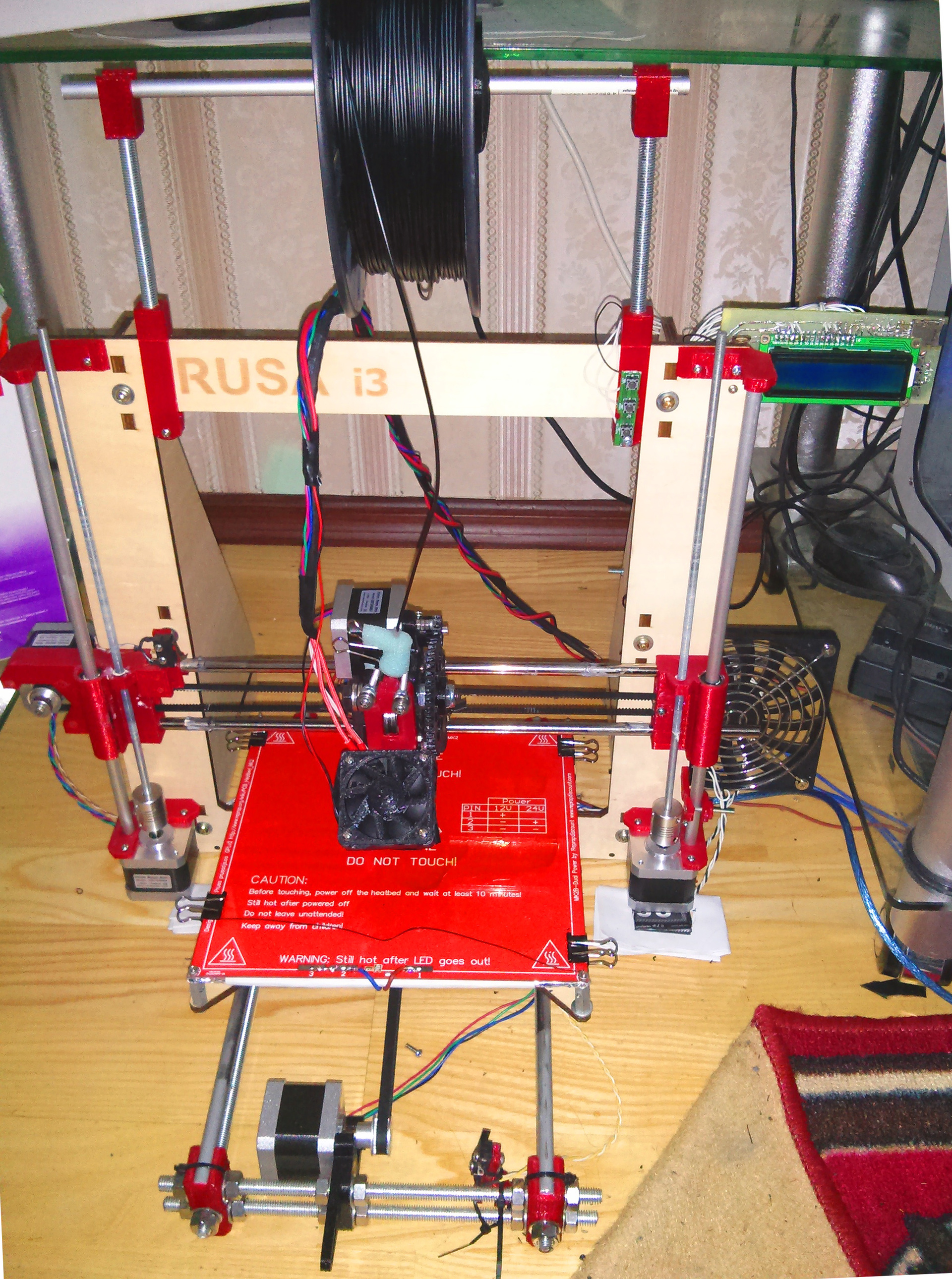
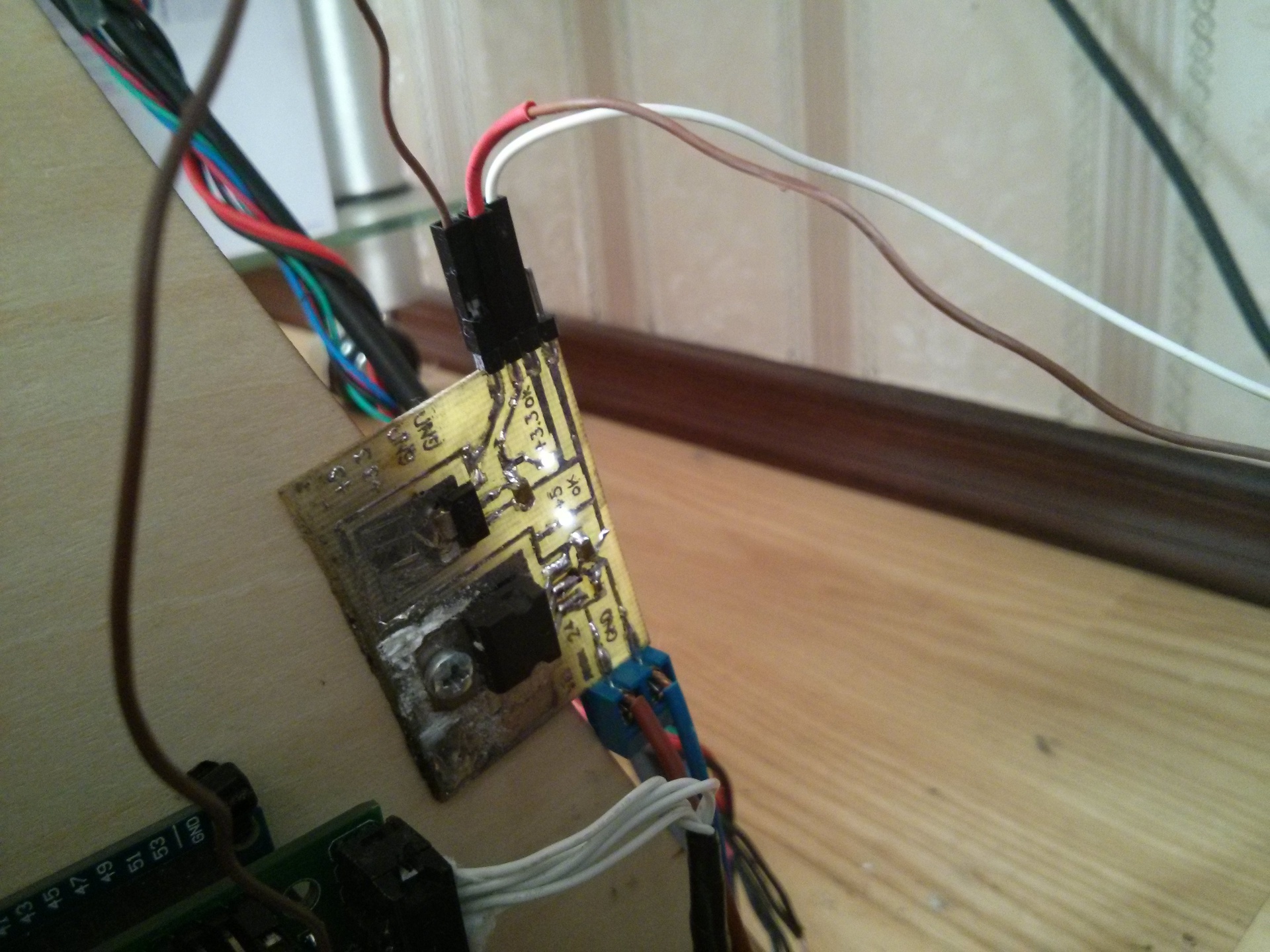


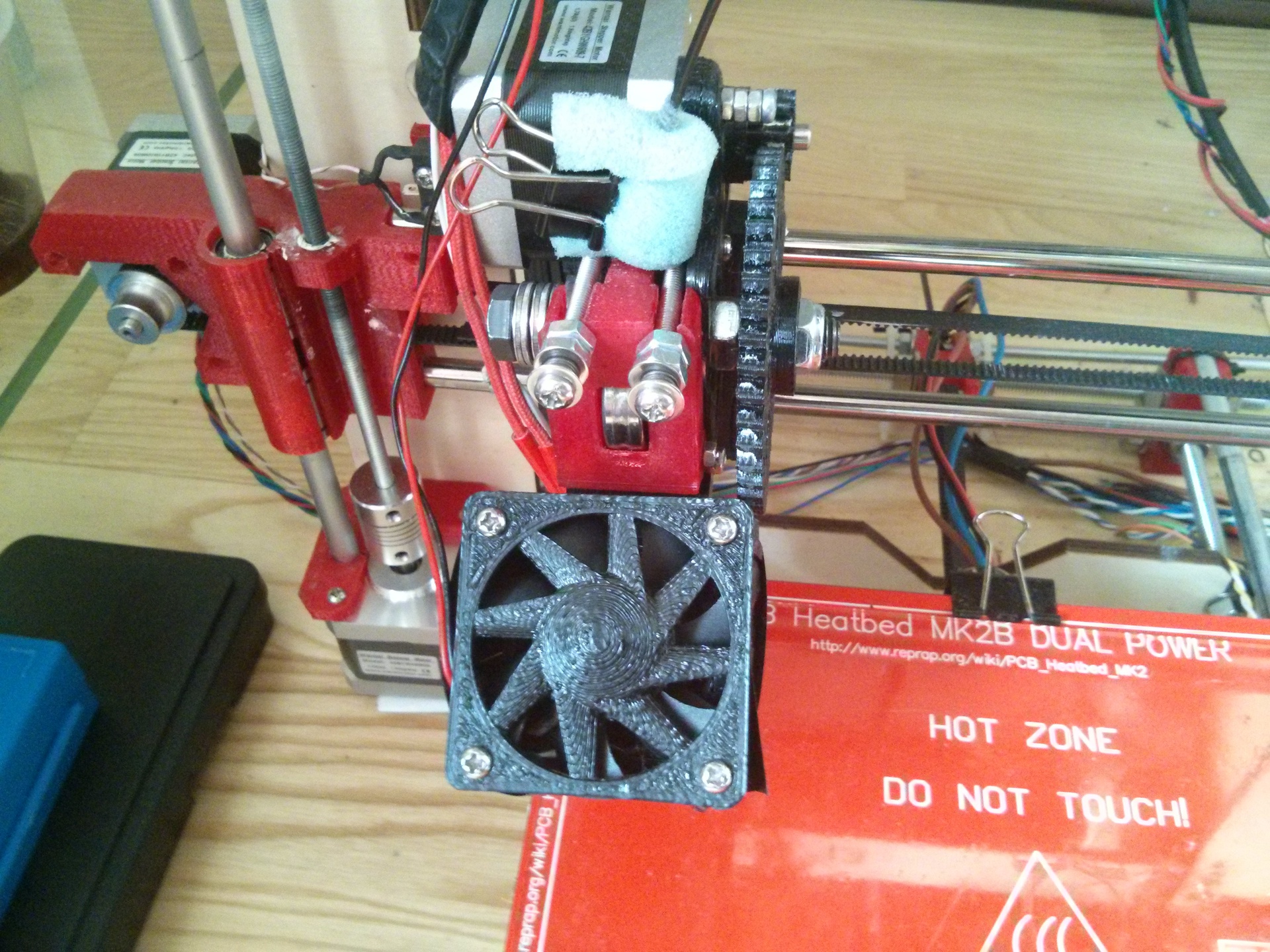
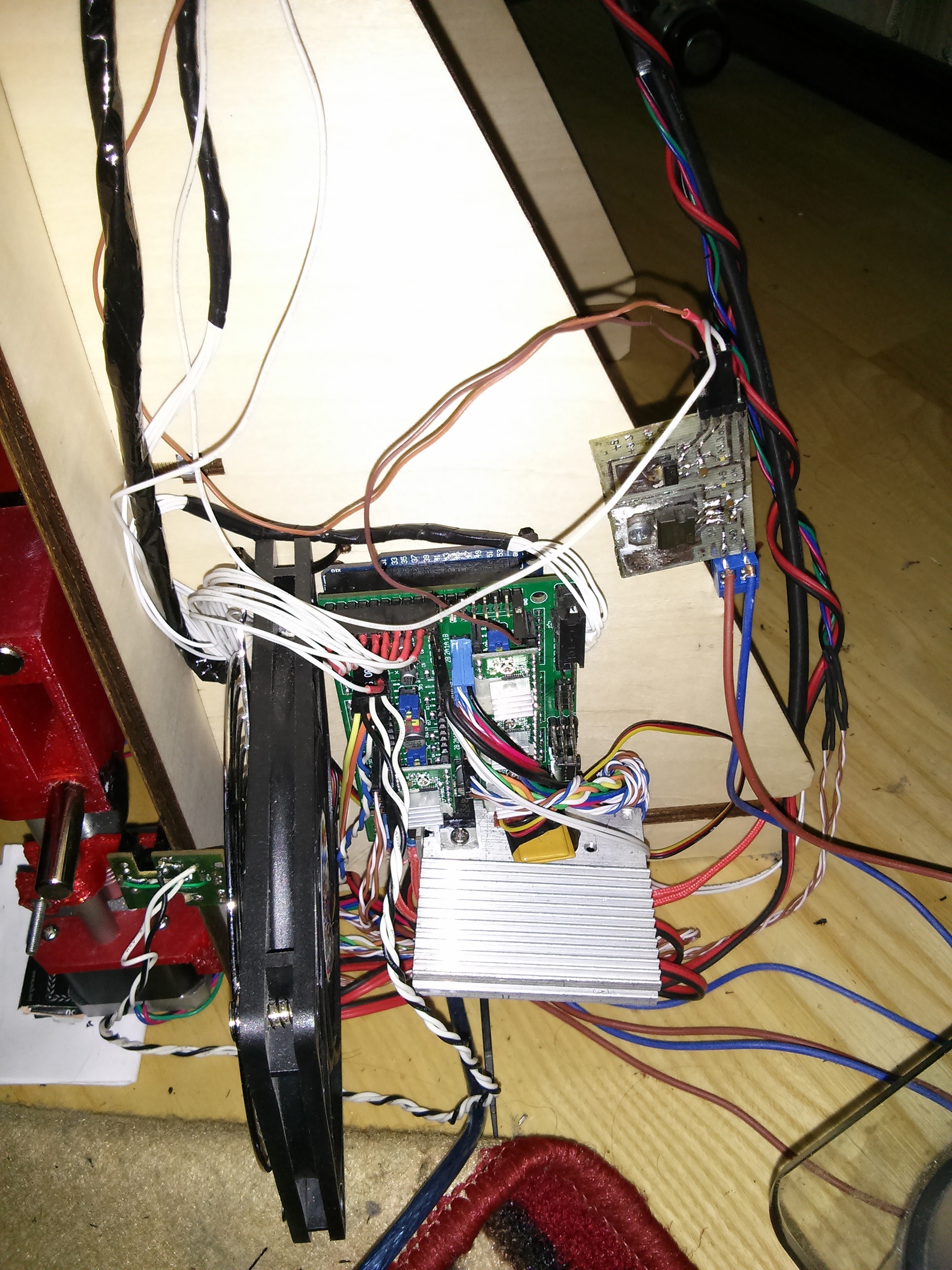






That's all for now. As usual, I look forward to questions and comments.
Well, post in the comments, what you want to read.
UPD: I forgot to mention that I replaced the X-axis guides with the guides from old scanners. And yesterday, during the next trip to the hardware store, I found a hollow aluminum profile of 7.96 mm. (from the stated 8th) rebuilt the Y and Z axes. That's what happened. Printing at reduced speed (30mm / s perimeter 40mm / s pouring), layer height 0.2mm. Print took 2.5 hours.
Yoda
modelka
Sizes: from ear to ear - 8 cm, from the nose to the back of the base - 6 cm, height - 6.5 cm.
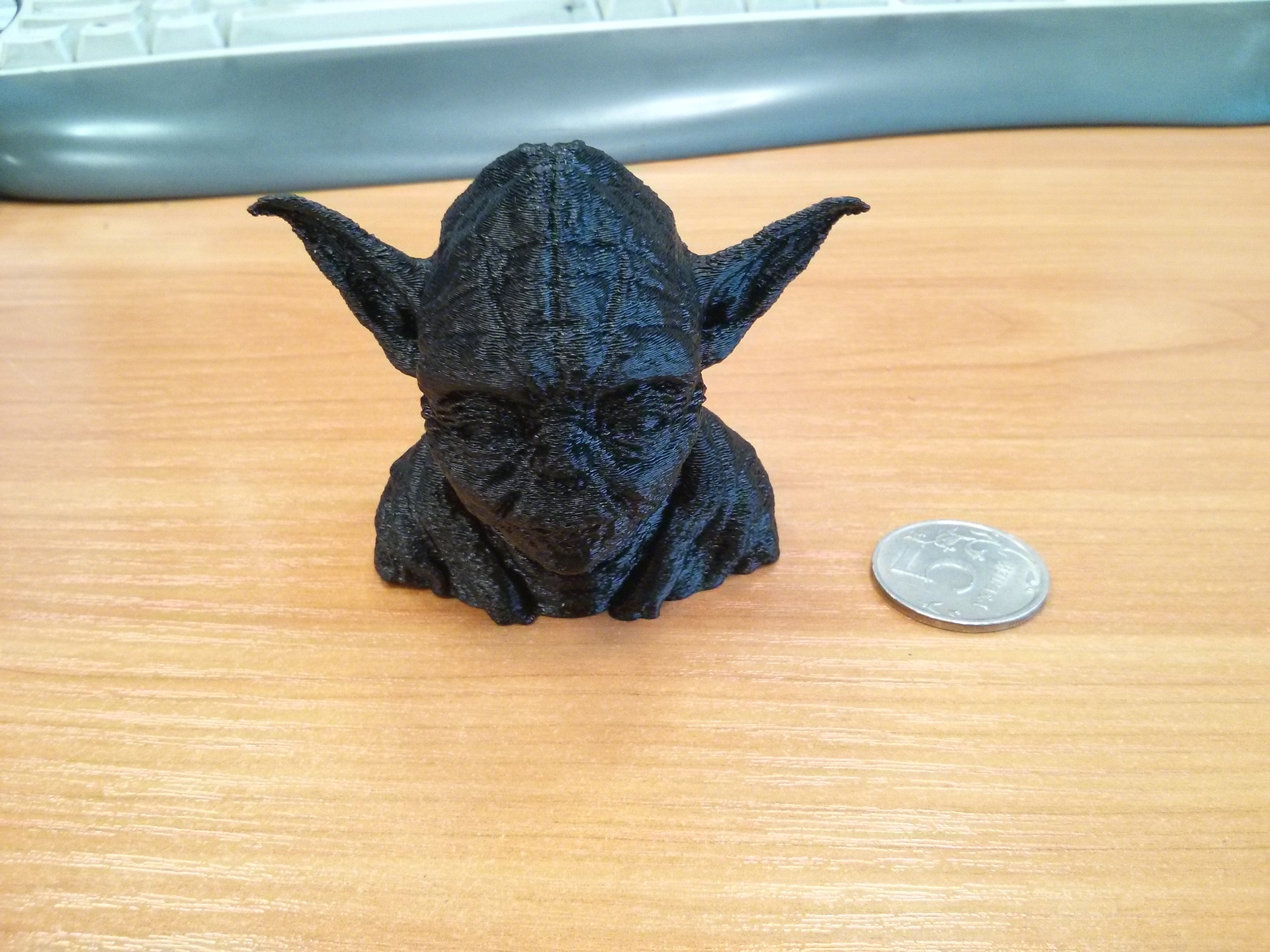
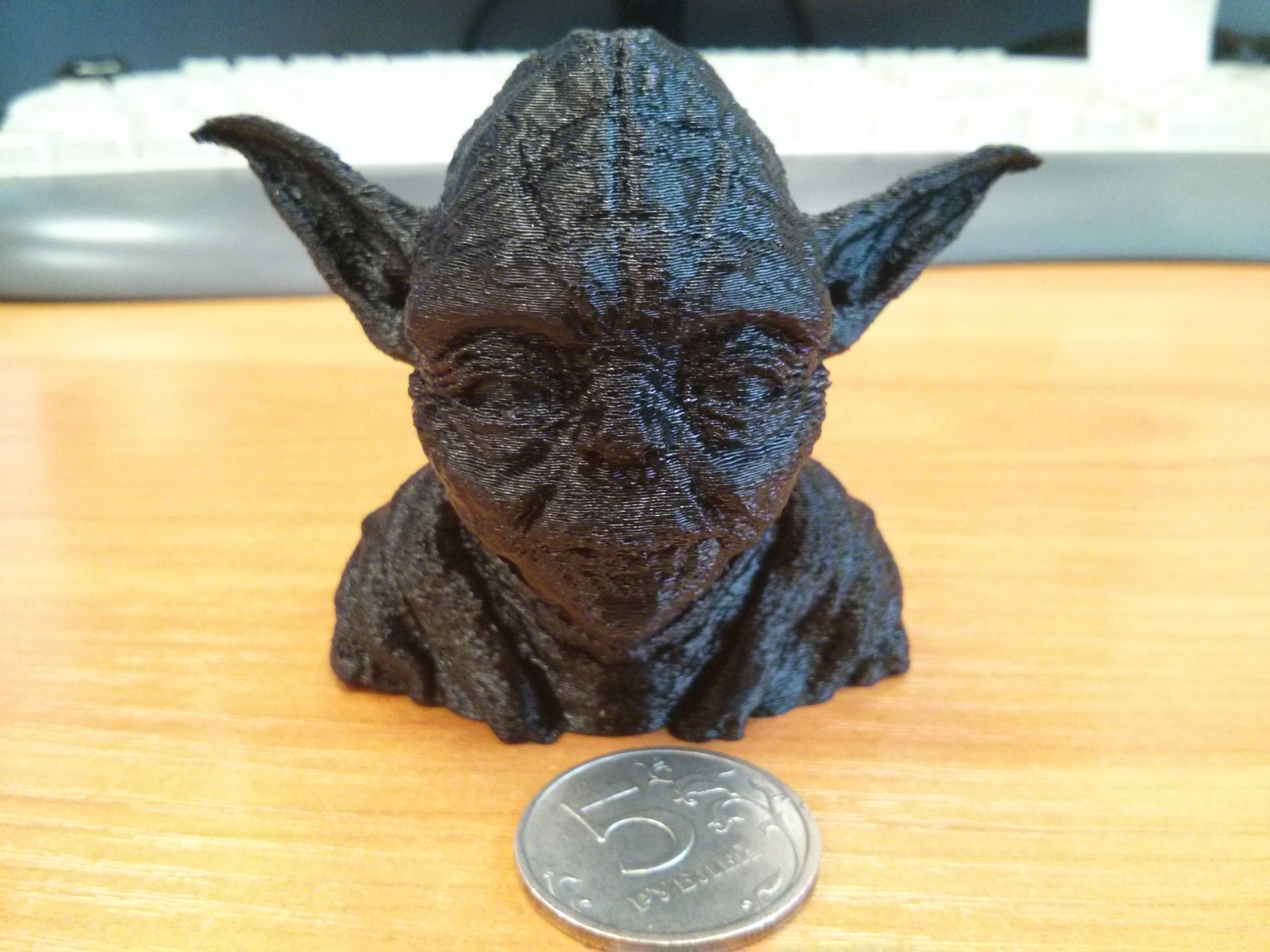


Sizes: from ear to ear - 8 cm, from the nose to the back of the base - 6 cm, height - 6.5 cm.




Source: https://habr.com/ru/post/224437/
All Articles